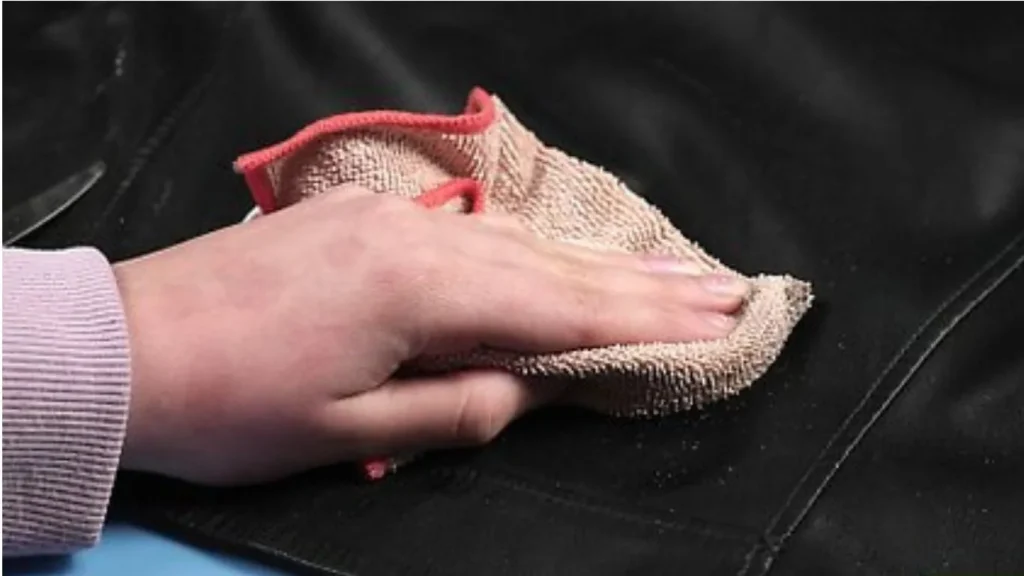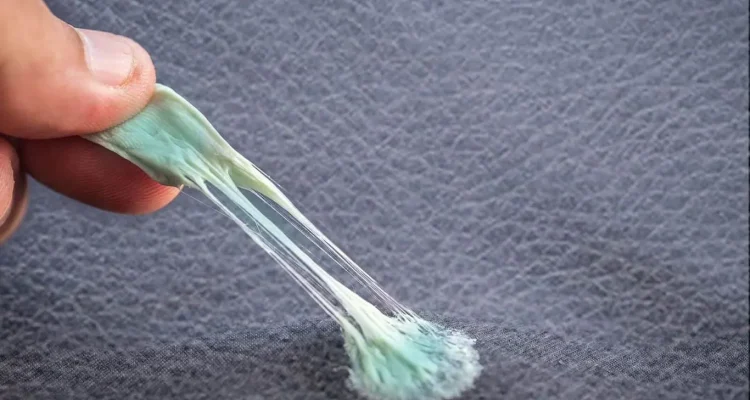Introduction
Have you ever sat down on your favorite leather couch only to find a sticky, gooey piece of gum clinging to it? Or maybe your leather jacket encountered a piece of stray gum while out and about. Regardless of how it happened, getting gum out of leather can be a daunting task. But don’t worry, with the right approach and tools, you can remove the gum without damaging your precious leather item. In this guide, we’ll walk you through various methods to safely and effectively remove gum from leather.

Understanding Leather
Before diving into the removal process, it’s essential to understand the material you’re working with. Leather comes in various types, each with unique characteristics that influence how you should handle and treat it.
Types of Leather
- Full-grain Leather: The most durable and highest quality, often used in high-end products.
- Top-grain Leather: Slightly less durable than full-grain but still of high quality.
- Genuine Leather: Made from lower layers of the hide, less durable and often more affordable.
- Bonded Leather: Made from leftover scraps, it’s the least durable and cheapest.
Characteristics of Leather
Leather is a natural, porous material that can absorb substances easily, which is why gum can adhere so strongly to it. It’s also sensitive to certain chemicals and abrasive methods, so care must be taken to avoid damaging the leather during the removal process.
Why Gum Sticks to Leather
Gum is made of synthetic rubbers, resins, and plasticizers, giving it a sticky, adhesive quality. When gum comes into contact with leather, the porous surface allows the gum to grip tightly, making it difficult to remove without leaving residue or causing damage.
Precautions Before Removal
Testing on a Small Area
Before applying any method or product to the gum, test it on an inconspicuous area of the leather. This ensures that the treatment won’t discolor or damage the leather.
Gathering Necessary Tools
Have the following tools ready:
- Ice cubes
- Plastic bag
- Blunt knife or spoon
- Soft cloths
- Leather cleaner
- Leather conditioner
Immediate Actions
Freezing Method
- Place ice cubes in a plastic bag.
- Hold the bag against the gum for a few minutes until it hardens.
- Gently scrape off the gum with a blunt knife or spoon.
Blotting Method
- Press a soft cloth against the gum to blot and lift as much as possible.
- Avoid rubbing, as this can push the gum further into the leather.
Using Household Items
Ice Cubes
Ice is a quick and effective way to harden the gum, making it easier to remove.
Peanut Butter
- Apply a small amount of peanut butter to the gum.
- Let it sit for a few minutes to soften the gum.
- Wipe away the gum and peanut butter with a damp cloth.
- Clean the area with leather cleaner to remove any residue.
Vinegar
- Dampen a cloth with white vinegar.
- Gently dab the gum until it starts to loosen.
- Remove the gum and clean the area with a leather cleaner.
Using Commercial Products
Leather-Safe Gum Removers
There are products specifically designed to remove gum from leather without causing damage. Follow the manufacturer’s instructions for best results.
Instructions for Use
- Apply the product directly to the gum.
- Allow it to sit for the recommended time.
- Gently scrape off the gum with a blunt tool.
- Clean and condition the leather afterward.
Step-by-Step Guide to Removing Gum
- Freezing Method:
- Apply ice in a plastic bag to harden the gum.
- Scrape off the hardened gum gently.
- Peanut Butter Method:
- Apply peanut butter, wait, and then wipe away.
- Clean with leather cleaner.
- Vinegar Method:
- Dab with vinegar until gum loosens.
- Remove gum and clean with leather cleaner.
- Commercial Remover:
- Follow product instructions for application and removal.
Post-Removal Care
Cleaning the Leather
Use a leather cleaner to thoroughly clean the area where the gum was removed. This helps to remove any remaining residue and prevent staining.
Conditioning the Leather
After cleaning, apply a leather conditioner to restore moisture and suppleness to the leather. This also helps to maintain its appearance and longevity.
Preventive Measures
Tips to Avoid Getting Gum on Leather
- Keep gum away from leather items.
- Store leather items in protective covers when not in use.
- Educate children and guests about the importance of keeping gum away from leather furniture and accessories.
Protective Treatments for Leather
- Apply a leather protector to create a barrier against stains and sticky substances.
- Regularly clean and condition leather to keep it in top condition.
Common Mistakes to Avoid
What Not to Do
- Avoid using sharp objects: These can scratch or puncture the leather.
- Don’t use harsh chemicals: These can discolor or damage the leather.
- Never rub vigorously: This can spread the gum and embed it deeper into the leather.
How to Handle Mistakes
If you accidentally damage the leather, seek professional help to repair and restore it.
Special Considerations
Delicate and Vintage Leather
For delicate or vintage leather items, it’s best to consult a professional cleaner to avoid causing irreparable damage.
Professional Help
If the gum is deeply embedded or you’re unsure about the removal process, professional leather cleaners can safely handle the job.
FAQs
- Can I use a hairdryer to remove gum from leather?
- No, the heat can damage the leather by causing it to dry out and crack.
- Is it safe to use oil-based products on leather?
- Use caution with oil-based products as they can stain the leather. Always test on a small area first.
- What if the gum has been on the leather for a long time?
- Older gum can be harder to remove. Start with gentle methods and consult a professional if needed.
- How often should I condition my leather items?
- Condition leather items every 3-6 months to keep them supple and protected.
- Can these methods be used on all types of leather?
- Most methods are safe for common types of leather, but always test on a small area first to ensure compatibility.
Conclusion
Removing gum from leather can be a challenging task, but with the right techniques and tools, it can be done effectively without causing damage. Remember to act quickly, use gentle methods, and always test on a small area before applying any treatment. By following these steps, you can keep your leather items looking their best.


Congratulation!